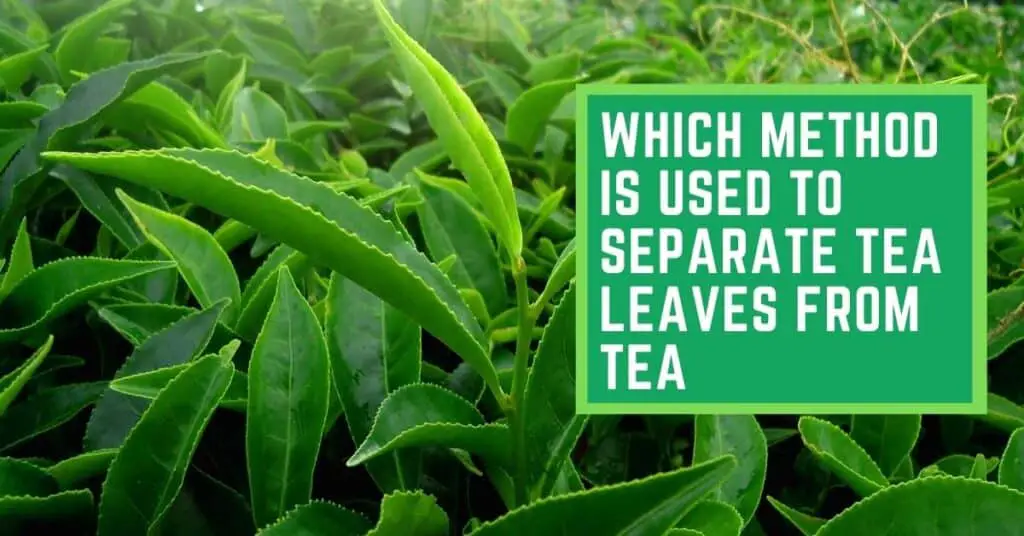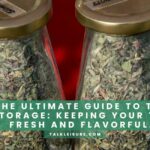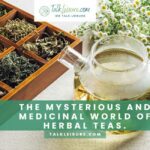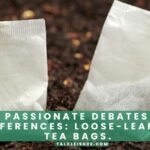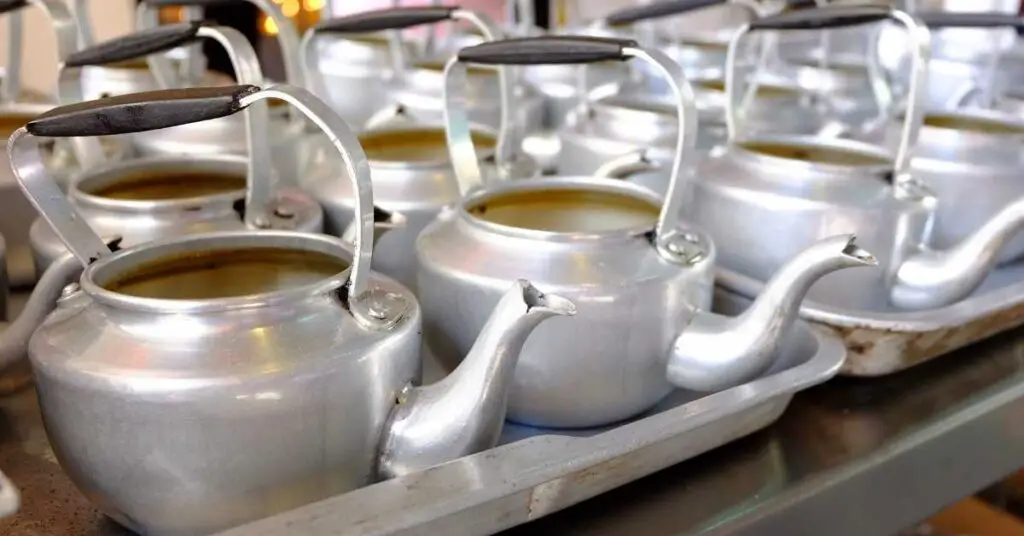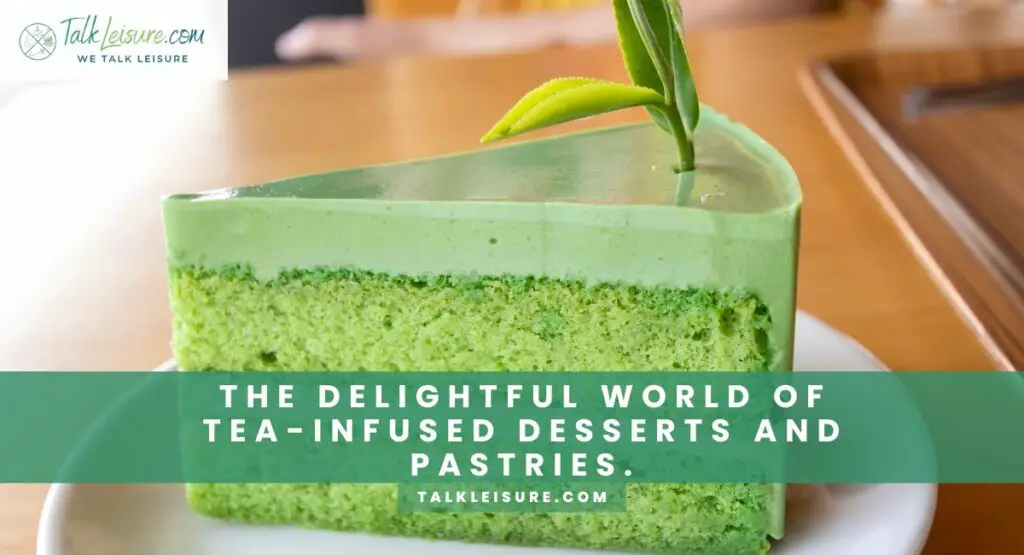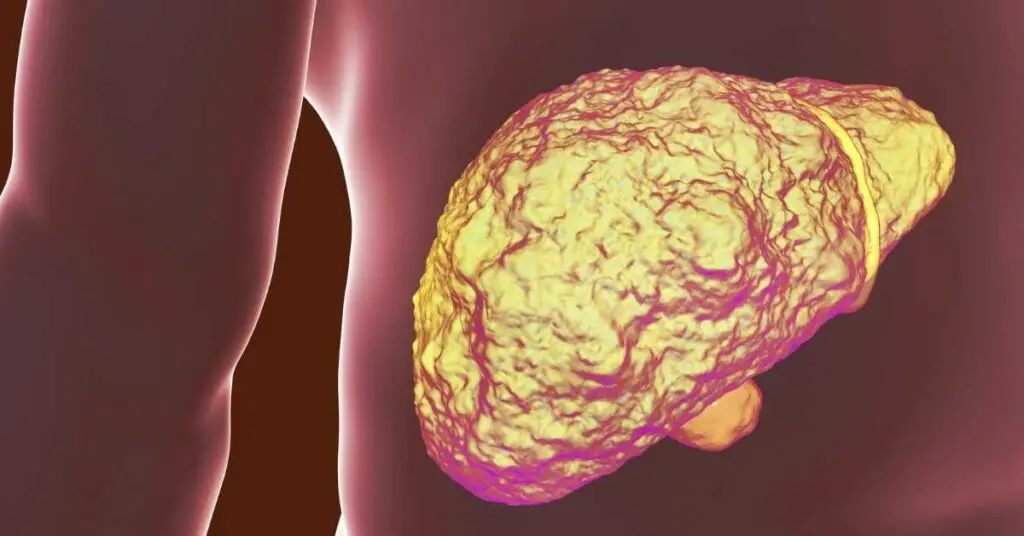Tea leaves have been used for centuries as a natural remedy to help improve health and wellness.
They are loaded with antioxidants and other beneficial compounds that can help support optimal health.
Tea leaves can be consumed in many different ways, including brewed as tea, added to food or smoothies, or even taken as a supplement.
The most common way to consume tea leaves is by brewing them into tea. This can be done by adding a teaspoon of tea leaves to 8 ounces of hot water or by using a teabag. The tea should be steeped for 3-5 minutes to allow the beneficial compounds to release.
Soon after the process of steeping, the tea leaves must be separated from the tea, which can be done in different ways using various techniques.
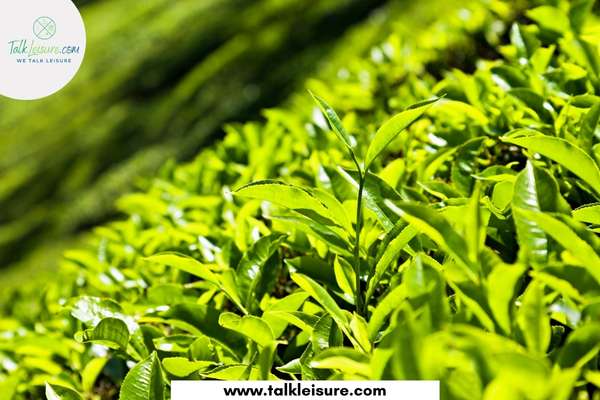
So, in this article, we will look at which method/s is used to separate tea leaves from tea.
There are a few different ways that tea leaves can be separated from tea.
The easiest and most common way to separate tea leaves from tea is to use a tea strainer.
Simply place the strainer over your cup and pour the tea through it.
This method allows for larger pieces of leaves to be separated from the smaller pieces, and the tea will be poured into your cup.
Overall, whatever the other methods are used, we generally call this task ‘filtration’.
The Physics of Filtration
Filtration is the process of separating solids from a fluid by passing the liquid through a porous material. The porous material retains the solid particles while the fluid passes through.
Effective Facts for Filtration
01. Size of Tea Pieces:
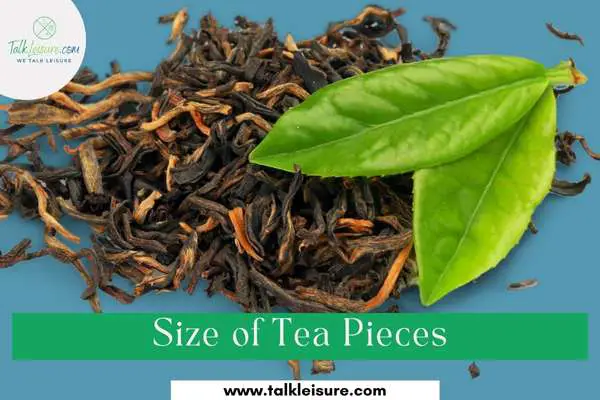
The size of the tea pieces is one such factor. Smaller tea pieces have more surface area and therefore filter out more quickly than larger ones.
This is because the surface area to volume ratio is greater for smaller pieces, so there is a more exposed surface area for the water to come into contact with.
This means that more of the flavour and nutrients from the leaves will be extracted into the water, resulting in a better-tasting cup of tea.
02. Type of Tea:
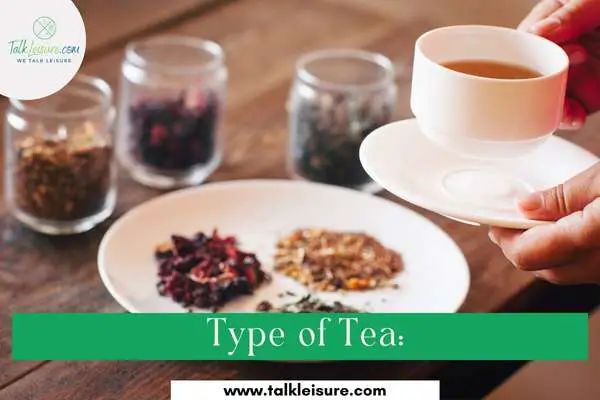
The type of tea affects the tea leaves filtration process in two ways. First, black tea is fermented, which makes it less porous than green tea.
This means that black tea can be steeped for a long time without the flavour becoming too strong or bitter. Second, the level of oxidation of the leaves affects their porosity.
Green tea is unoxidized, so its leaves are more porous and thus must be steeped for a shorter time to avoid over-steeping. So, here longer steeping means lesser filtration while shorter steep means the opposite.
03. Thickness of Tea:
The thickness of tea affects tea leaves filtration from tea in a few ways. First, the thicker the tea, the more difficult it becomes to strain the leaves from the liquid.
This means there is an excellent chance to remain even the smaller tea pieces that can go through the strainer due to its high thickness. In that case thickness of tea affects the tea leaves filtration from tea.
04. Brewing Methods:
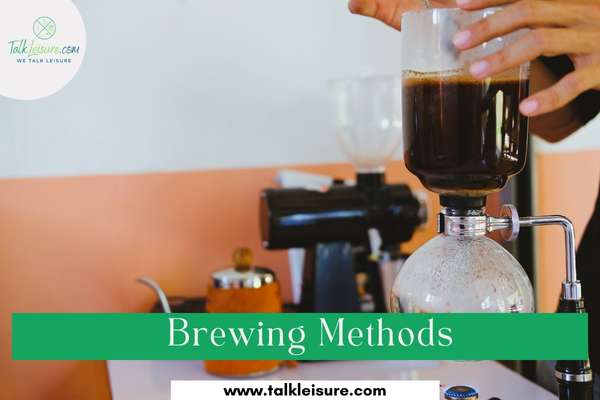
Different brewing methods can affect how well tea leaves are filtered from the final cup of tea.
For example, if you are using a loose leaf tea, gravity can cause the leaves to settle at the bottom of the cup more quickly than if you are using a teabag.
Additionally, if you steep your tea for a shorter amount of time, there may be more leaves left in the cup than if you steeped it for a longer period of time.
Ultimately, it is up to the individual to decide what brewing method works best for them in terms of filtration.
Types of Tea Filters / Infusers
Tea Infuser Baskets:
Tea infuser baskets are mesh strainers that are specifically designed to steep tea. The mesh allows the tea leaves to circulate in the water, which results in a better infusion.
To use a tea infuser basket, you simply fill it with loose tea leaves, place it in your teacup or teapot, and then pour hot water over it. The leaves will gradually release their flavour into the water, resulting in a delicious cup of tea.
Tea Ball Infusers:
A tea ball infuser is a type of small strainer that is often used to brew a single cup of tea. The infuser consists of a small metal or mesh ball with a handle, which can be placed in a cup or mug containing hot water.
The infuser allows the tea leaves to be steep in hot water while keeping them contained, so they do not end up in the cup. Once the tea has been brewed to the desired strength, the ball can be removed and discarded.
Silicone Tea Infusers:

Silicone tea infusers are a great way to make loose leaf tea without having to deal with the mess of a traditional teabag.
It is a perforated cup made of silicone rubber with a handle that allows it to be easily removed from the hot water.
To use one, simply fill it with your desired amount of loose leaf tea and place it in your cup or mug. Then, add hot water and let it steep for the recommended time.
Once the tea is finished brewing, simply remove the silicone infuser and enjoy!
Travel Mugs with Infuser:
A travel mug with an infuser is a mug that has a built-in strainer on the bottom. This allows you to add fresh fruit or herbs to your drink, which will then impart their flavour into the beverage.
The infuser is typically a removable insert that sits in the bottom of the mug. You can fill it with whatever fruit or herbs you like, then screw the top of the infuser onto the mug.
Just remove the infuser and enjoy your flavoured beverage when you’re ready to drink.
Infuser Teapots:
Infuser teapots are teapots that come with an infuser basket. The infuser basket is used to hold the tea leaves in the pot while the water is boiling.
This allows for a more even distribution of heat and prevents the tea leaves from over-steeping. To use an infuser teapot, simply add your desired amount of tea leaves to the basket and then pour boiling water over the top.
Allow the tea to steep for 3-5 minutes before removing the infuser basket, and enjoy!
Types of Tea in terms of Dust Grades
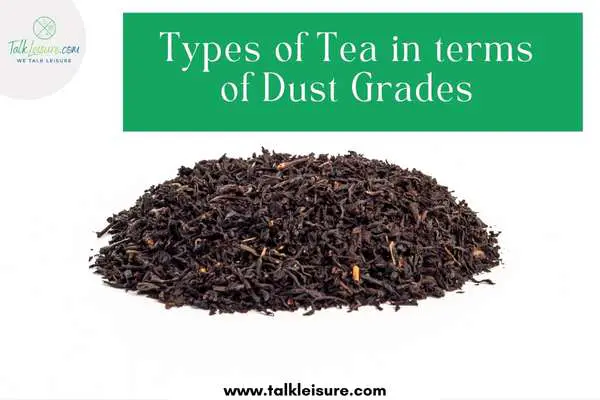
OP Tea:
OP Tea is a tea company that specializes in organic teas. Their teas are made from the finest ingredients and are USDA certified organic.
OP Tea offers a wide variety of teas, including black, green, white, and herbal teas. They also have a line of superfood teas that are infused with vitamins and minerals.
FBOP Tea:
FBOP tea is a type of black tea that originates from Assam, India. The name stands for “first flush, broken orange pekoe.”
This type of tea is typically made with younger leaves and buds that are picked during the first flush (the first growth period after pruning). FBOP teas tend to be lighter in body and flavour than other types of black tea.
FB Tea:
FB Tea is a type of tea that is made from the leaves of the Ficus bengalensis tree.
This tree is native to India and Bangladesh, and the leaves are used to make a variety of different kinds of teas.
Some of the most popular types of FB Tea include, but are not limited to, Assam tea, Darjeeling tea, and Nilgiri tea.
BOPF Tea:
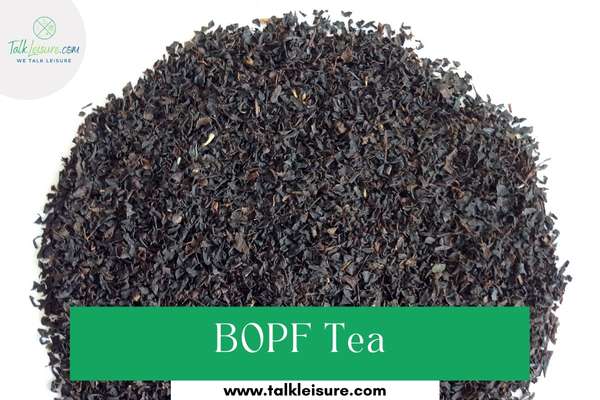
BOPF Tea is a black tea made of the bud and two leaves of the Camellia sinensis plant.
The term “BOPF” is an acronym for “bud, orange pekoe, flower”, which collectively refers to these specific tea leaves.
BOPF Tea is considered a high-quality black tea because it consists of only the youngest leaves on the tea plant.
FBOP1 Tea:
FBOP1 is a black tea type. It is full-bodied with a malty flavour and has moderate astringency.
FBOP1 tea is made from the finest leaves plucked from the tips of the Camellia Sinensis bushes.
The leaves are then withered and bruised to release their flavour and aroma. They are then rolled into small balls, which release their flavour even further.
BOP Tea:
BOP Tea is a type of black tea that hails from Sri Lanka. It is made from a blend of three different types of tea leaves – Orange Pekoe, Broken Orange Pekoe, and Broken Pekoe – which gives it its distinctive flavour profile.
BOP Tea is typically quite strong and full-bodied, with a slightly tannic taste. It is often enjoyed with milk and sugar to round out the flavours.
PEKOE Tea:
There are actually several different types of tea known as “Pekoe.” Pekoe tea can be either black or green and is named for the small, young leaves that are used to brew it.
The leaves are picked by hand, and the lower two leaves and the bud are gently rolled before being dried. This results in a delicate, fragrant tea with a light, floral flavour.
DUST Tea:
DUST Tea is a type of tea that is made out of dried plant leaves and buds.
The name might make it sound like it’s a totally different kind of tea, but it’s actually just a variation of black tea.
The difference with DUST Tea is that the leaves and buds are smaller in size, so they can be dried and packaged more easily.
Filtered Tea – Can it be reused?
Yes, you can reuse tea leaves that have been filtered. Simply remove the leaves from the filter and rinse them off before using them again.
Keep in mind that the second infusion will be weaker than the first, so you may want to adjust the amount of time you steep the tea accordingly.
What To Do With Filtered Waste Tea Leaves

There are actually a few things you can do with your filtered waste tea leaves! Here are a few ideas:
Compost Them:
Tea leaves make great compost material because they are rich in nutrients.
Add them to your compost pile and let nature do its work!
Make Leaf Mold:
Leaf mould is a type of compost that is made specifically from leaves.
It takes longer to break down, but it makes an excellent soil amendment or mulch.
To make leaf mould, simply place your tea leaves in a bin or bag and let them decompose over time.
Use them as Fertilizer:
Tea leaves can also be used as a fertilizer for plants.
Just mix the leaves into the soil around your plants or add them to your compost pile.
The nutrients in the leaves will help your plants grow healthy and strong!
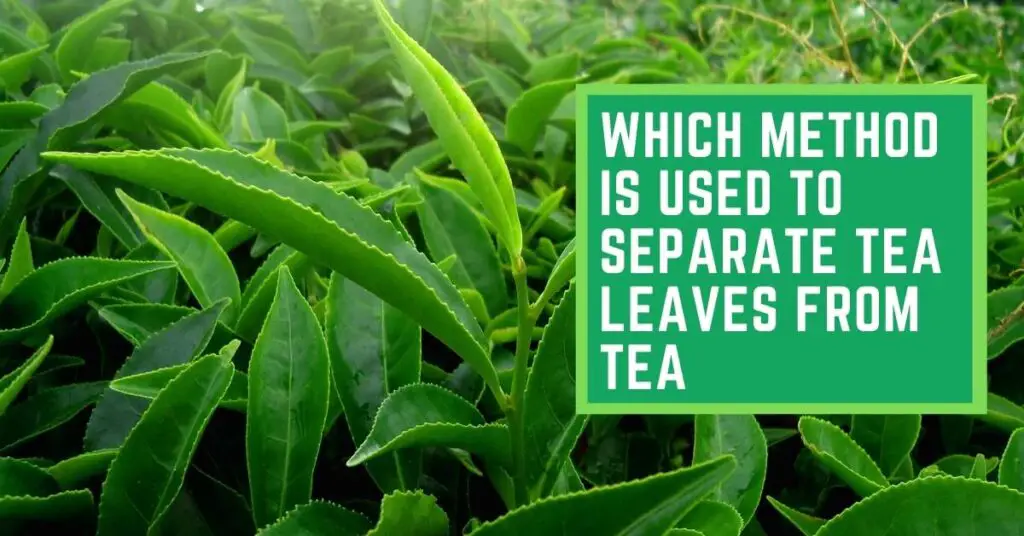
Related Matters
01. Is it bad to drink tea leaves?
No, it’s not bad to drink tea leaves. In fact, many people believe that drinking tea made from fresh tea leaves is more beneficial than drinking commercially-made tea bags. Some people even prefer the taste of freshly brewed tea. If you’re interested in trying this, simply steep a small handful of fresh tea leaves in hot water for a few minutes. You can also find pre-packaged loose leaf teas at many specialty stores.
02. Can I make a new tea with leftover filtered tea leaves?
Absolutely! In fact, many people prefer to do this with tea leaves that have already been steeped once. This allows the flavours to meld together in a different way and can often result in a richer, more nuanced cup of tea. To make a new tea with leftovers, simply add fresh water and heat until boiling. Then steep for the desired amount of time.
03. What if I used the same filtered tea leaves on the following day?
If you mean using the same leaves in a new pot of water, this is fine. In fact, many tea drinkers do this to save time and effort. However, if you’re talking about reusing leaves that have already been brewed once, this is not recommended. The leaves will have already released most of their flavour and will likely produce a weaker cup of tea. Additionally, reused leaves can start to develop bacteria, which is why it’s generally best to discard them after one use.
04. The separation of tea leaves by strainer is called?
The separation of tea leaves by strainer is called filtration. Filtration is a process that removes solid particles from a liquid using a filter. You typically put the leaves in the pot or teacup first, then add hot water when you make tea. Once the tea has been brewed for a few minutes, you’ll want to filter it before drinking to avoid bitter flavours and floating leaves.
05. Hot tea leaves can burn you?
Yes, hot tea leaves can burn you if you’re not careful. Tea leaves are extremely hot when they first come out of the pot, so it’s important to let them cool down for a few minutes before handling them. If you do accidentally burn yourself with hot tea leaves, immediately run cold water over the affected area to help cool and soothe the skin.

